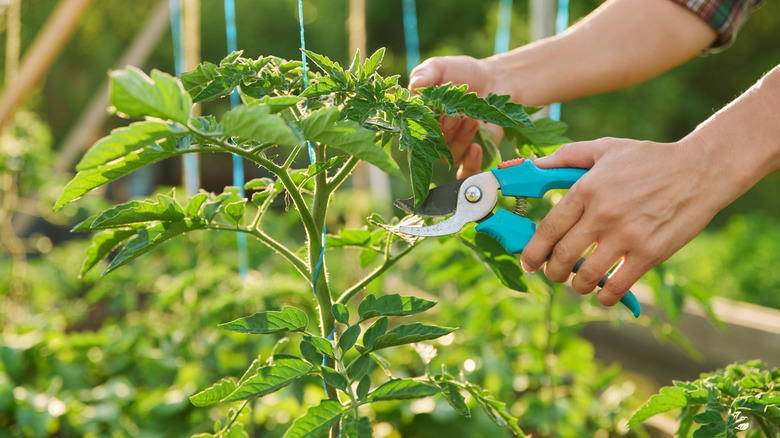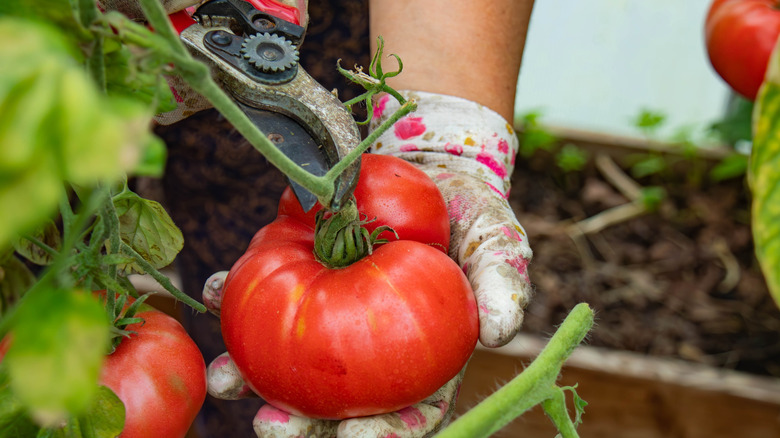The Best Time To Prune Your Tomato Plants For More Fruit, And How To Do It
If you want to boost your tomato harvest, timing your pruning efforts is key. Pruning at the right stage helps plants channel more energy into producing larger, tastier fruit rather than excessive leafy growth. For the best results, start to prune when your tomato plants are about 12 to 18 inches tall and the first flowers are open. Starting early in the season helps shape the plant's structure and encourages a single, strong central stem that will be able to support fruit weight better as it grows. Early pruning also prevents plants from becoming overly bushy, leading to airflow issues and increasing the chance of fungal disease.
Many people don't know that there are two types of tomatoes: indeterminate varieties that require ongoing pruning as they continue growing and determinate types. Determinate tomatoes benefit from minimal pruning since they produce all of their fruit in a short period. Indeterminate tomatoes benefit most from pruning, which helps balance vegetative growth with fruit production. Determinate varieties generally need little to no pruning beyond removing the lower leaves so they don't touch the ground. While there's no single "magic date" for pruning your tomatoes, staying attentive to your plant's growth patterns will guide your timing. Pruning is just one piece of a broad plant care program, but done correctly, it can make a significant difference in your harvest.
Remove suckers and continue pruning for better fruit
Prune on dry days when possible to reduce the risk of disease from entering fresh cuts. Effective pruning starts with removing the small shoots, or "suckers," that sprout between the main stem and leaf branches. If left unchecked, these shoots will compete for the plant's energy at the expense of fruit production. Pinch or snip suckers when they're about 2 to 4 inches long for minimal stress to the plant, and the resulting wound should be easy for the plant to recover from. Smaller branches can also be pinched with your fingertips. Handheld snips may need to be used to cut any larger branches cleanly, but be sure to use clean, sharp tools to prevent disease spread.
Combining pruning with staking or caging provides crucial support as the plant grows and keeps fruit off the ground. It also makes your job of pruning a bit easier as your plant grows taller. Aside from suckers, focus on clearing lower leaves that touch the soil to prevent soil-borne pathogens from splashing onto leaves during watering or rain. This lowers the risk of diseases like early blight, which can wipe out an entire tomato patch at once. For indeterminate tomatoes, continue pruning weekly to maintain a single main stem and prevent the canopy from becoming too dense.
If you can't commit to regular pruning, you may want to consider compact tomato varieties which take up little space, sometimes labeled as a patio tomato. These smaller, sturdy tomato plants don't grow as aggressively or require as much upkeep. If you're looking for other ways to care for your tomatoes, consider methods to prevent tomatoes from cracking and splitting or growing companion plants next to the tomatoes in your garden.

